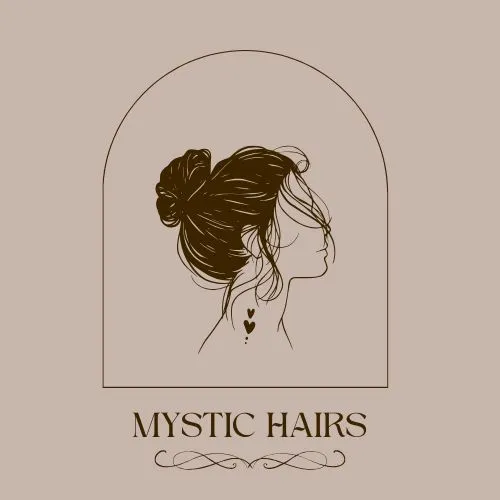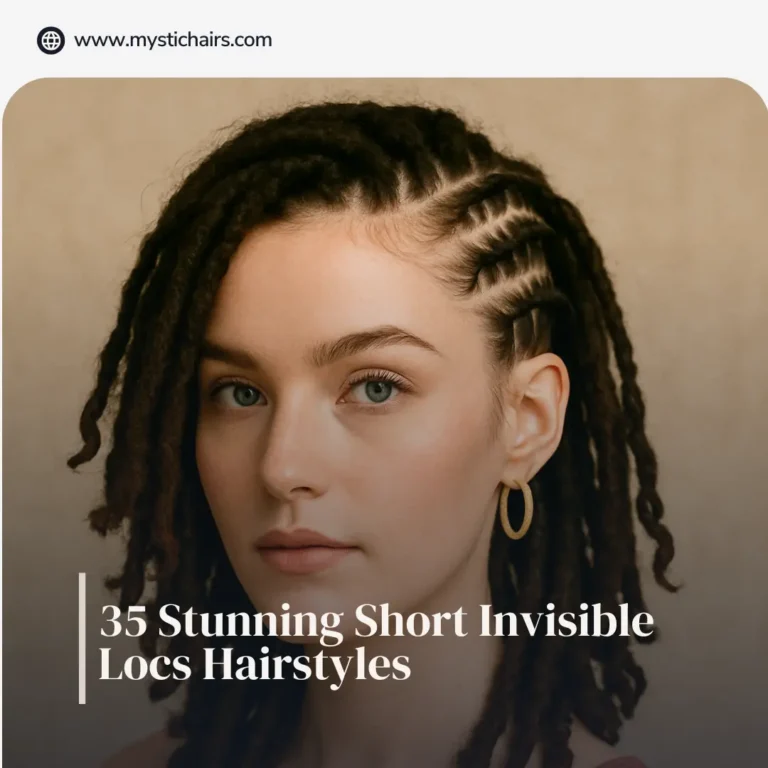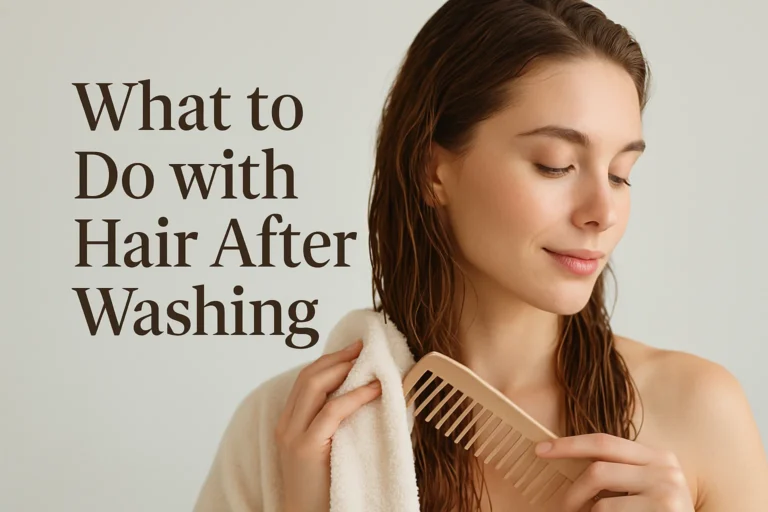How to Fix Orange Hair After Bleaching at Home
Experiencing orange hair after bleaching at home is a common problem that can leave your hair looking brassy, uneven, and far from the platinum or ash tones you wanted. This often happens because natural red and orange pigments in your hair are not fully lifted during the bleaching process, leaving behind stubborn warm tones. Even with careful at-home bleaching, factors like hair type, previous color treatments, or improper processing times can result in a vibrant orange hue. Understanding why this happens is the first step to correcting it safely.
Correcting orange hair doesn’t necessarily mean another full bleaching session, which can be risky and damaging. There are a variety of toning and color-correcting methods that can restore a balanced, neutral look while keeping your hair healthy. By combining gentle toners, purple or blue shampoos, color-depositing masks, and targeted treatments, you can fix orange hair after bleaching at home effectively.
How to Fix Orange Hair After Bleaching at Home
Consistency, patience, and proper hair care are key to achieving salon-quality results from the comfort of your own home.
Why Hair Turns Orange After Bleaching
Hair turns orange after bleaching due to the way natural pigments lift during the process. Hair contains underlying warm tones—reds, yellows, and oranges—that can appear if bleach doesn’t remove them completely. Fine or previously dyed hair reacts unpredictably, and even a slight miscalculation in processing time can result in visible brassy hues. Additionally, low-quality bleach or improper mixing ratios can fail to lift enough pigment, leaving your hair with that unwanted orange tint.
Another contributing factor is the lack of follow-up toning. Bleaching opens the hair cuticle, and if the hair isn’t toned afterward, underlying pigments can oxidize and intensify, making orange strands more prominent. Environmental factors like sun exposure or chlorine from swimming pools can also enhance brassiness. Understanding these causes helps in choosing the most effective strategies to fix orange hair after bleaching at home without damaging your hair further.
1. Use a Blue or Purple Shampoo
Using a blue or purple shampoo is one of the easiest and safest ways to neutralize orange hair after bleaching at home. Purple shampoos target yellow undertones, while blue shampoos are effective against deeper orange or brassy tones. Incorporating these shampoos into your routine 2–3 times a week gradually balances your hair color and maintains a cooler, more natural shade. Proper use requires leaving the shampoo on for 3–5 minutes before rinsing, ensuring the pigments have time to counteract the brassy tones.
Besides toning, these shampoos also provide additional benefits such as gentle cleansing and light hydration, preventing further dryness caused by bleaching. Over time, consistent use keeps your blonde or lightened hair looking more vibrant, shiny, and uniform. Blue or purple shampoos are an essential part of a complete at-home hair color correction routine for anyone struggling with post-bleach orange hues.
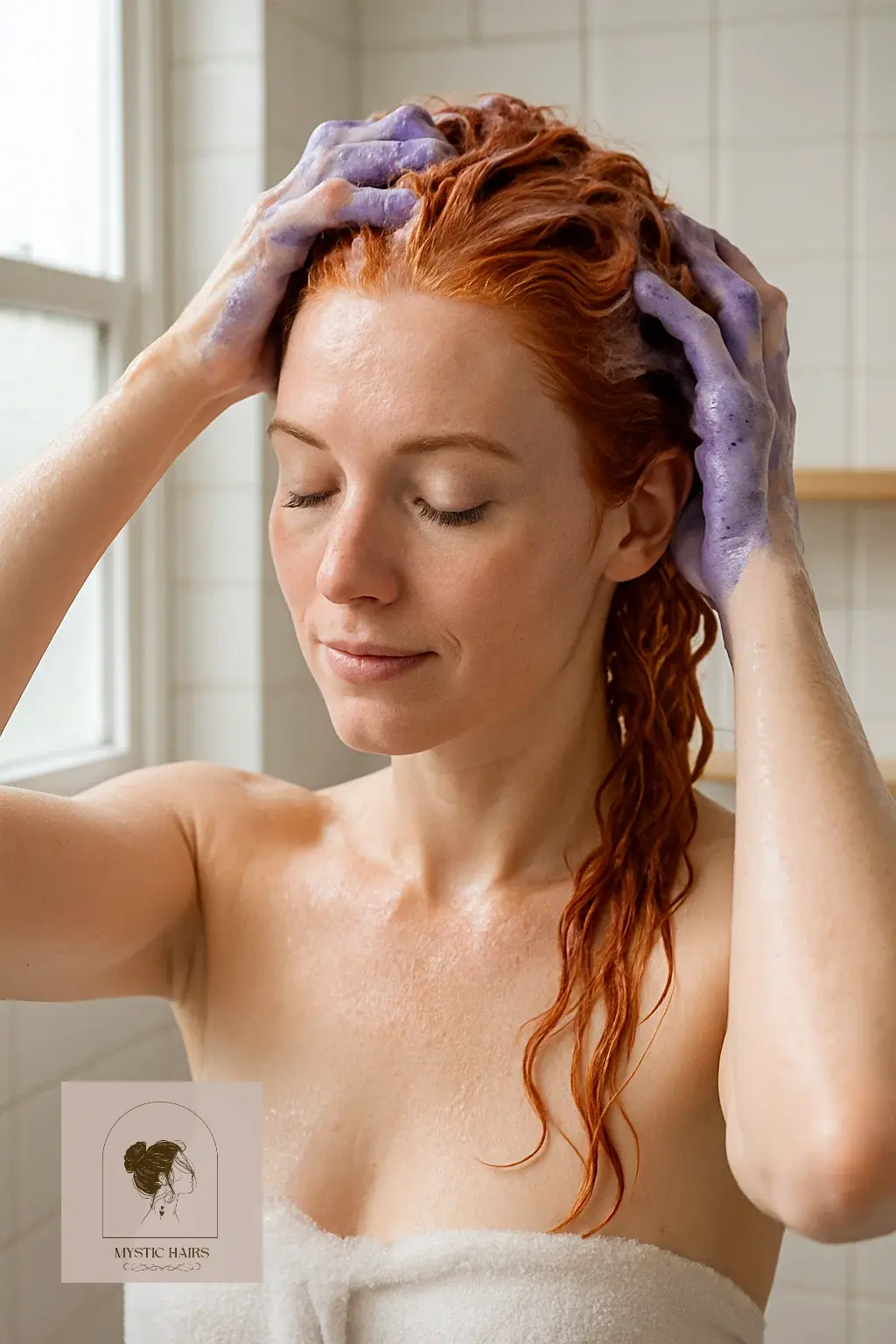
2. Apply a Toner
Toning is a professional technique you can safely replicate at home to fix orange hair after bleaching. Toners deposit cool pigments, such as ash or violet tones, that neutralize unwanted warmth and correct brassy hues. Popular at-home toners like Wella T18 are effective on lightened hair, delivering a more even, natural color. Apply the toner on towel-dried hair according to package instructions for 15–30 minutes, depending on the level of correction needed.
Using a toner not only balances hair color but also enhances shine and smoothness, reducing the dull, uneven appearance of over-processed strands. Unlike repeated bleaching, toning strengthens the hair and preserves its health. For best results, combine toner application with deep conditioning treatments to maintain hydration and elasticity, which are often compromised after bleaching. Properly executed, toning can completely transform brassy hair into the cool, neutral look you desire.
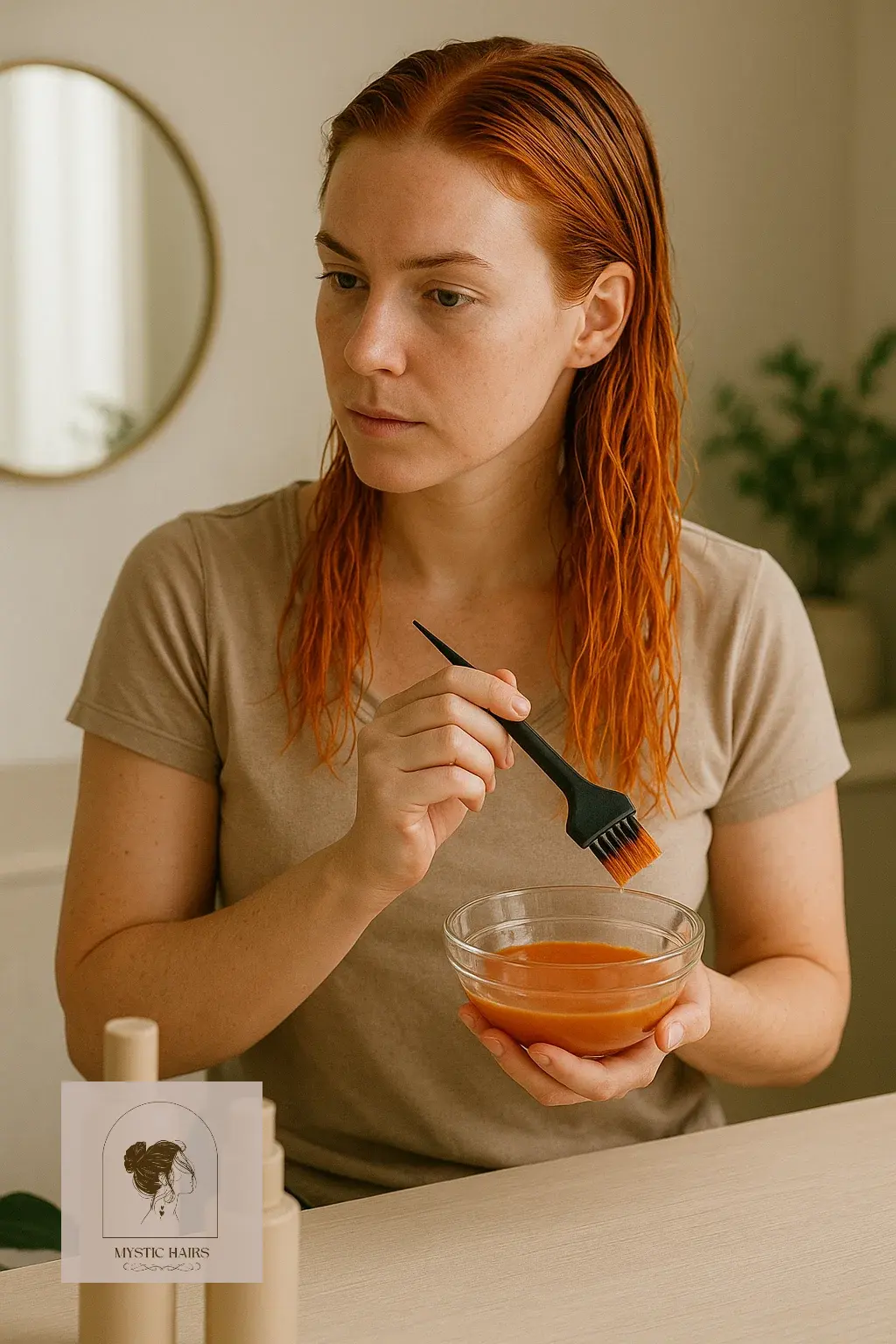
Mineral deposits from hard water can worsen brassiness after bleaching. Learning how to remove hard water build up from hair will help maintain a cleaner, more even blonde tone.
3. Use a Color-Depositing Mask
Color-depositing masks are an excellent solution to fix orange hair after bleaching at home while simultaneously restoring moisture. These masks contain violet or blue pigments that slowly correct brassy tones and can be used once or twice a week. They also hydrate and smooth the hair, repairing dryness caused by bleach. By leaving the mask on for 15–20 minutes before rinsing, the pigments have time to penetrate the hair shaft, providing both color correction and nourishment.
In addition to neutralizing orange tones, these masks strengthen the hair and prevent further damage from daily styling. They are ideal for at-home use because they combine toning with hydration, reducing the need for harsh chemical treatments. Regular use of color-depositing masks helps maintain a consistent hair color, keeping your blonde or lightened hair vibrant, shiny, and healthy over time.
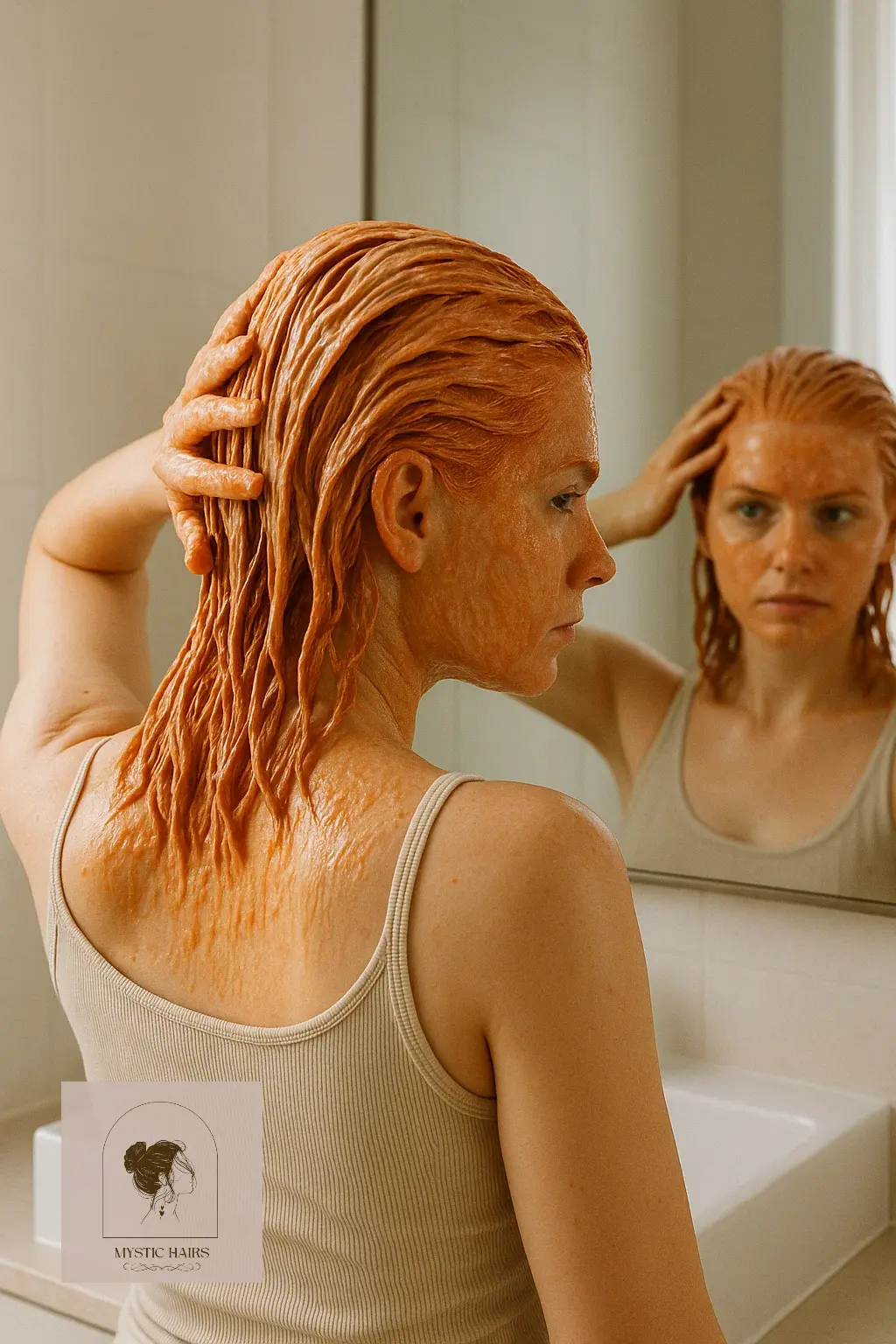
4. Try a DIY At-Home Fix
If you prefer natural solutions, there are several DIY treatments that can help fix orange hair after bleaching at home without harsh chemicals. Coffee, black tea, or beetroot juice can subtly tone brassy strands. Coffee and black tea deposit darker pigments that reduce orange undertones, while beetroot juice adds red hues to balance uneven warmth. Always perform a strand test first to avoid over-toning or unexpected color results.
These DIY methods are especially useful for maintaining your blonde or lightened hair between salon visits. While the effects are temporary, repeated use can gradually neutralize brassy tones. Pairing these treatments with a moisturizing routine also helps repair dryness caused by bleaching, giving your hair a smoother, shinier, and healthier appearance.
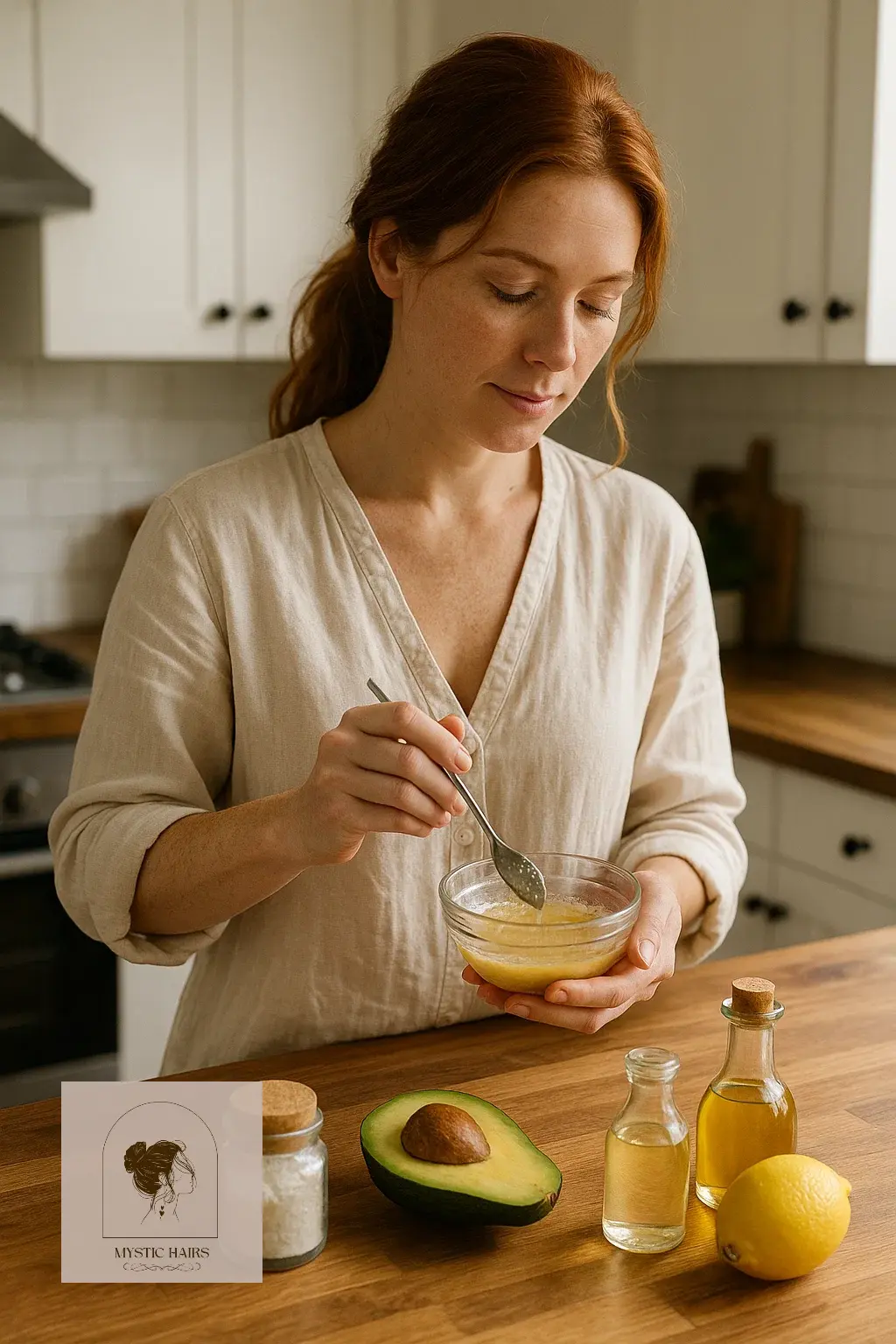
Bleaching can make fine strands more noticeable. Find out how to control baby hairs so your freshly toned hair looks polished and smooth from root to tip.
5. Re-Bleach with Caution
In some cases, stubborn orange tones may require a careful re-bleach. If your hair still shows intense brassy shades after toning, selectively re-bleaching the affected sections can lift the remaining warm pigments. However, this should be done cautiously to prevent breakage or excessive damage. Use deep conditioning treatments before and after the process to strengthen hair and maintain elasticity.
Re-bleaching is usually recommended only for severe cases, and it’s important to monitor the hair’s condition closely. Combining this method with a toner and hydrating treatments ensures that you fix orange hair after bleaching at home safely. By addressing brassy tones strategically, you can achieve a uniform, neutral color without compromising hair health.
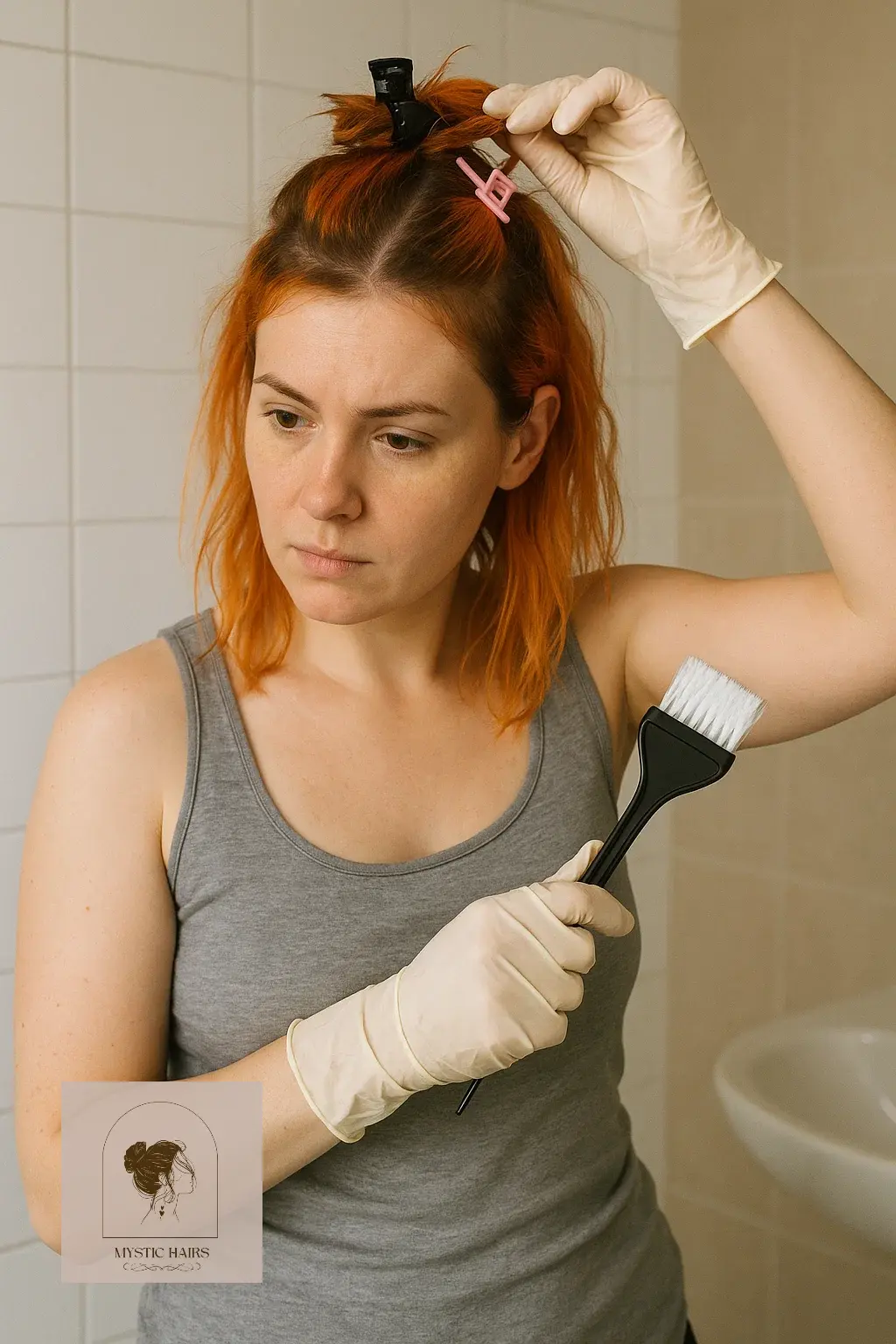
6. Deep Conditioning Treatments
Bleached hair tends to be dry and porous, which can make brassy orange tones more noticeable. Incorporating a deep conditioning treatment into your routine is a must if you want to fix orange hair after bleaching at home. Treatments containing keratin, argan oil, or shea butter restore moisture, repair damage, and smooth the hair cuticle. Apply once or twice a week for 20–30 minutes to maximize hydration.
In addition to moisture, deep conditioning strengthens hair against breakage and helps maintain your desired tone longer. Hydrated hair reflects light better, which reduces the appearance of brassy shades and leaves hair looking shiny and healthy. Combining toning products with deep conditioning is a highly effective at-home strategy for color correction.

7. Use a Purple or Blue Conditioner
Purple or blue conditioners are another great tool to fix orange hair after bleaching at home. Unlike shampoos, these conditioners remain on the hair longer, allowing pigments to deposit while conditioning the strands. They help neutralize orange and yellow undertones, keeping blonde or lightened hair cooler and more balanced.
Regular use also improves hair manageability and reduces frizz, which can make brassy tones more pronounced. By integrating these conditioners into your hair care routine, you maintain a healthy blonde hair color, strengthen strands, and prolong the effects of toning treatments, all from the comfort of home.
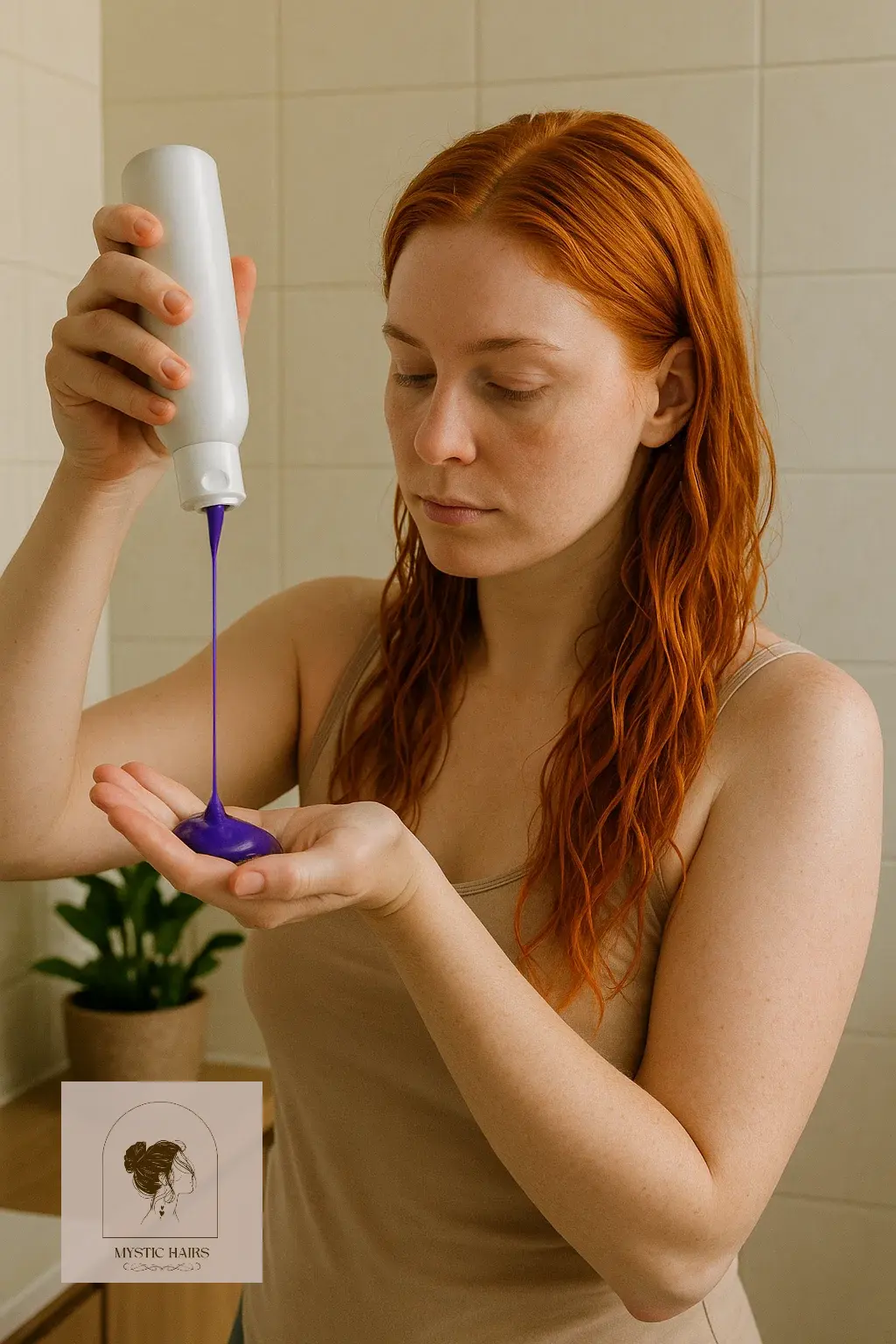
8. Limit Sun and Heat Exposure
Sunlight and heat styling can accelerate brassiness and worsen orange hair after bleaching. UV rays oxidize pigments, making orange or brassy tones more vivid, while hot tools can damage the hair cuticle. Using heat protectants and wearing hats or UV-protective sprays can prevent further color shift.
Reducing exposure to direct sunlight or using protective styles also maintains your toner’s effectiveness. Keeping hair healthy and shielded ensures that your at-home efforts to fix orange hair after bleaching at home last longer, while minimizing the need for repeated chemical treatments.

9. Maintain a Regular Hair Care Routine
Consistency is key when correcting brassy hair. A proper routine of toning, conditioning, and occasional treatments ensures that orange tones don’t reappear. Use How to Fix Orange Hair After Bleaching at Home strategies like purple shampoo, blue conditioners, and deep conditioning treatments regularly to maintain results.
Incorporating weekly masks, gentle shampoos, and hydrating serums also prevents further damage from drying agents. Over time, a disciplined hair care routine restores vibrancy, shine, and smoothness, keeping your hair healthy and free from unwanted orange tones.
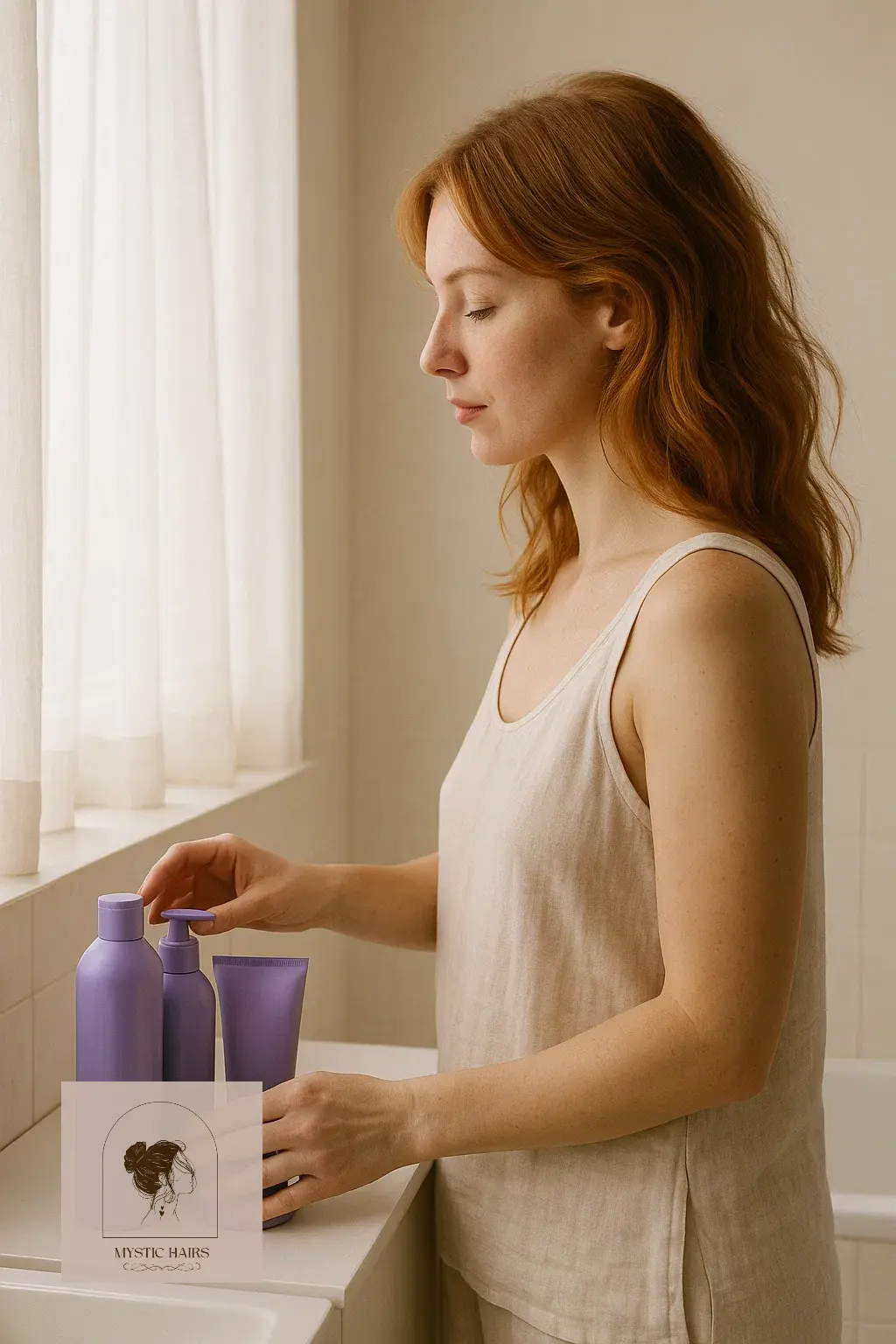
10. Protect and Repair Hair After Toner
Once you’ve successfully neutralized orange tones, ongoing protection is essential. Use nourishing oils, leave-in conditioners, and minimal heat styling to maintain your corrected color. This ensures your hair remains strong, shiny, and less prone to color fading or brassiness.
Additionally, periodic toning treatments and hydrating masks reinforce hair health, making it easier to manage and style. Following these steps helps anyone fix orange hair after bleaching at home achieve long-lasting results while keeping their hair smooth, soft, and vibrant.
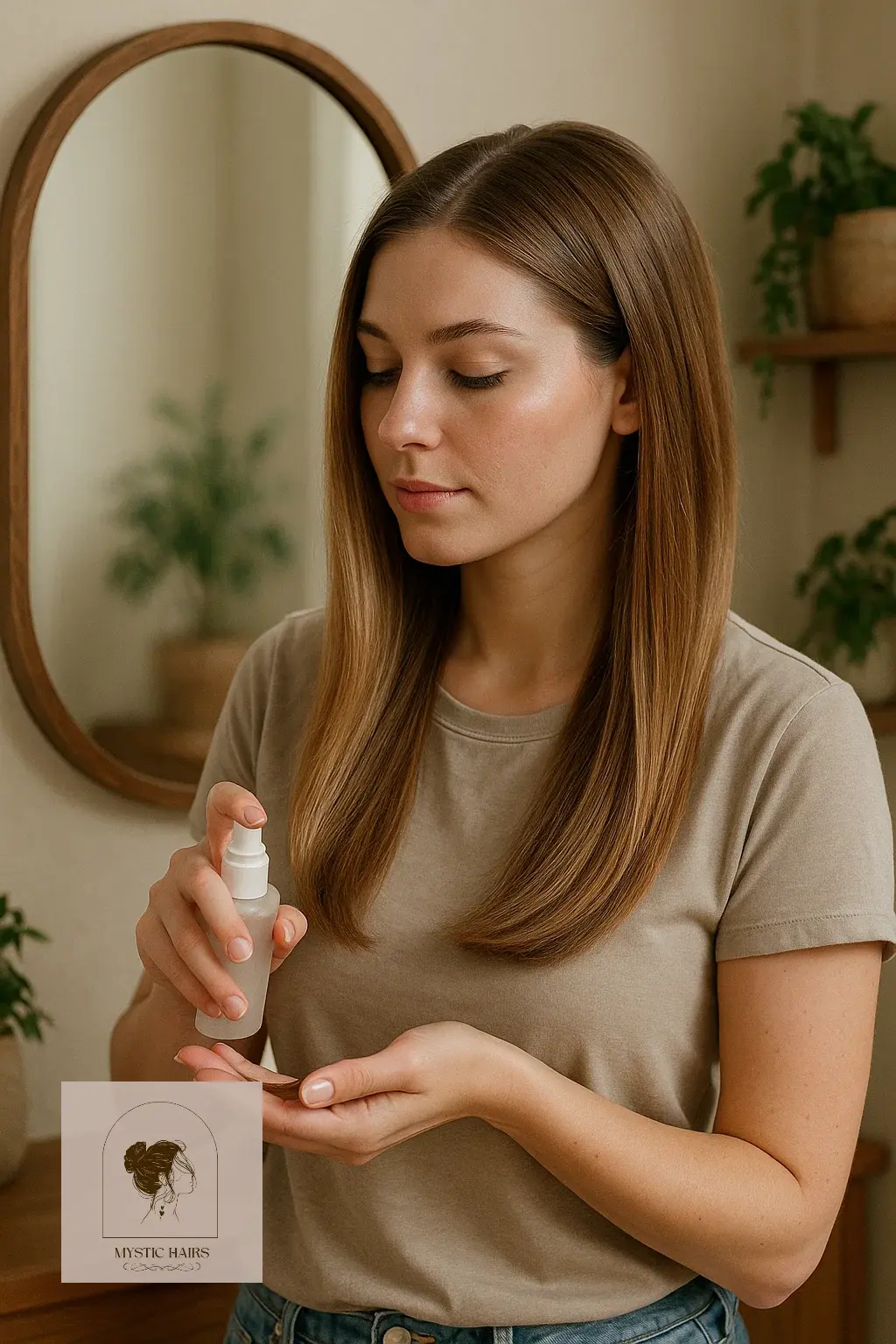
Proper care after every wash is key to preventing orange tones from returning. Explore what to do with hair after washing to keep your color bright and long-lasting.
Bonus Tips
- Sleep on silk pillowcases to reduce friction and preserve your color.
- Avoid daily shampooing; instead, use co-washing or dry shampoo to maintain tone.
- Incorporate weekly protein treatments for stronger, more resilient hair.
- Apply a heat protectant before any styling to prevent cuticle damage.
- Schedule regular trims to remove damaged ends and keep hair looking polished.
Conclusion
How to Fix Orange Hair After Bleaching at Home is a common concern, but with the right approach, you can restore your desired shade without causing further damage. Combining toning shampoos, conditioners, deep conditioning treatments, and occasional DIY or selective re-bleaching ensures brassy orange tones are neutralized. Maintaining a consistent hair care routine, protecting hair from heat and UV damage, and nourishing it with oils or masks keeps your blonde or lightened hair healthy, shiny, and vibrant. By following these expert tips, anyone can fix orange hair after bleaching at home and enjoy smooth, evenly toned, and beautiful hair.

Aria Blake is a beauty writer and hairstyle curator passionate about empowering women through timeless trends and modern haircare. With a deep love for natural textures and creative styling, Aria blends expert tips with real-life inspiration to help you look and feel your best—every single day. When she’s not writing for MysticHairs.com, you’ll find her exploring protective styles, sipping herbal tea, or pinning dreamy looks for your next hair glow-up.
